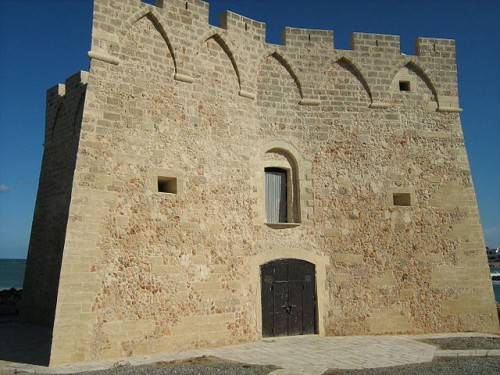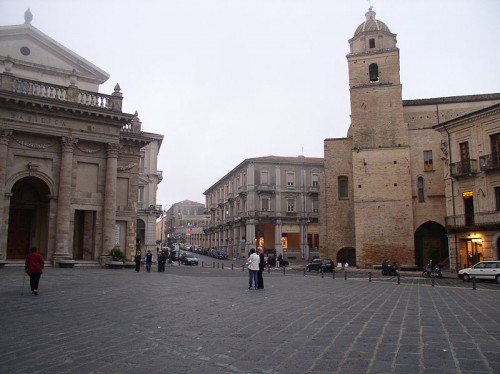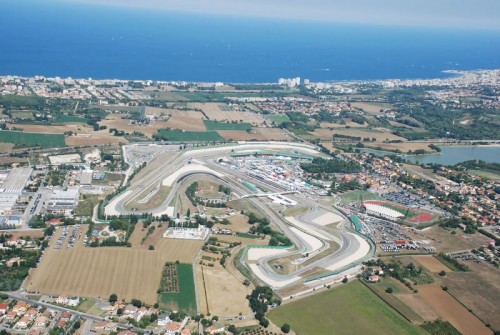 Photo CC-BY-3.0 by Roberto sernicola
Photo CC-BY-3.0 by Roberto sernicola
For those who had not yet figured out, the beautiful Salento is full of so many things that make it very special. We’re talking, of course, of the fantastic sea and beautiful beaches, the many churches and also the coastal towers that are located throughout the Salento. When you see a tower, it brings your mind to the past.
Why the Salento region area is full of this kind of towers and what was their main function?
We start by saying that the Salento is full of these towers because they had a protective function. They served, in fact, to spot the dangers in the event of invasion attempts by foreign peoples like Moors. During the fifteenth and sixteenth century, the Mediterranean was in turmoil and this Southern region was much coveted by many people, who wanted to take advantage of the strategic location.
Puglia has always been considered the link between East Europe and West Europe as well as Europe and Northen Africa and, therefore, to conquer this region would have meant to buy an outpost of strategic importance. Precisely for this reason, in defense of the Salento and regional coasts, these watchtowers were build.
Some of them may even date back to Normans, as there are clear and irrefutable evidence. Some of these towers are currently in poor condition, but others have remained quite well and became the tangible evidence of the methodology of defense typical of those centuries.
Let’s see, then, what are the coastal towers present in Salento.
The coastal Towers
We start from the towers of the province of Lecce, and then broaden our vision even to those in the province of Brindisi and Taranto.
The towers in the province of Lecce are, surely, the most numerous and also the best preserved of the lot.
Many of these watchtowers are now residential home. Looking at their position, stepping back to scenes of those centuries with Puglia and Salento in danger and the resistance of the population.
We are sure that a tour to visit the various coastal towers of Salento is a good opportunity to discover all there is around. Being located throughout the territory, in fact, they can be a great starting point for exploring what’s around.
In this way, Lecce, Otranto, Gallipoli, Nardò marinas, Porto Cesareo, Santa Cesarea Terme, Tricase, Santa Maria di Leuca, Manduria, Fasano, Ostuni, can be visited in their entirety.
Moreover, the Salento is the land to love in all its aspects, and not only for its sea, which is wonderful. The culture of this land, the traditions that have their roots in a past so remote but never forgotten, religious architecture and the civil one: this is Salento and this is what the tourist must love and discover. We are sure that, once you are in Salento, a piece of your heart remains at the wonderful beaches to enjoy the beautiful sunsets of Italy.
Many of these towers have been built during the Spanish period, the beginning of the sixteenth century by Charles V on both coasts, from San Cataldo (Adriatic Sea) in Porto Cesareo (we are on the Ionian Sea), to locate the distant enemy predator – Turks and pirates mainly – who was preparing the assault. In 1480 Otranto, during the Aragonese domination, was besieged and invaded by the Turks, gloomy protagonists of the bloody massacre of 800 people (the famous martyrs of Otranto) who refused to convert to the Islamic faith.
The defense strategy of the territory contemplated also the restructuring of existing old Swabian and Angevin towers and the fortification of the farms, strongholds of the economy in Salento. The only province of Lecce has 57 towers, many of which are however in very poor condition. Most of this is on the east side, the Adriatic shore (offshore linking to Greece and the Balkans).
Very important examples and known to everyone are Torre Rinalda, Torre Chianca Torre Veneri, Torre San Cataldo, belonging to the municipality of Lecce; Specchiolla tower, which is part of Casalabate Marina, close to Squinzano; Torre Roca Vecchia, Torre dell’Orso, belonging to the municipality of Melendugno; Torre dell’Orte Palascia Tower, Tower Badisco, Torre Santo Stefano, belonging to the municipality of Otranto.
As said, these are just some of the coastal towers in the province of Lecce – among the best known and best preserved – but there are lots of that, just like these, give the name to so many areas of our Salento.
The towers’s structure
Powerful military was however well integrated with the beautiful coastal scenery, especially in the memory of the proud and memorable resistance of the people of Salento . Most, however, they were used to the mere sighting of enemy boats and so they are very small, square or circular.
Only a few, especially north of Gallipoli, are larger because they are employed as home control and for bundling goods.
Downstairs, in general, there was a cistern to collect useful rainwater , above the living area and terrace on the slots where to place mortars and muskets. Considerable advantages enjoyed, as “captain of the tower,” the man who bought a tower or was assuming its rights and obligations. So it often happened that some captain could “overdoing it” with merchant ships that landed in the area and take advantage of it dramatically. Instead of making a verbose list of all the coastal towers scattered along the two seas, we limit ourselves to some curiosity.
Torre Mozza (Ugento marina) was so called because it collapsed several times and almost immediately after the end of the construction work. The cause? To save money, not infrequently, they used sea water to mix in the mortar. This, however, caused a rapid erosion of the walls.
Torre San Giovanni (Ugento), today became a lighthouse (crucial to avoid the boats to run aground on the famous and treacherous shallows) and home to the “Coast Guard”. The tower looks like a vertical chessboard white and black, which makes it easily spotted – even from a distance – from the sea. Some towers, finally, are decorated with lights in occasion of the festivals celebrated in the sea during the summer.
The illumination of the one located in Torre Pali is fascinating on the feast of August 17. Torre Pali represents, among other things, the only sighting tower with the foundation completely immersed in the sea.
















